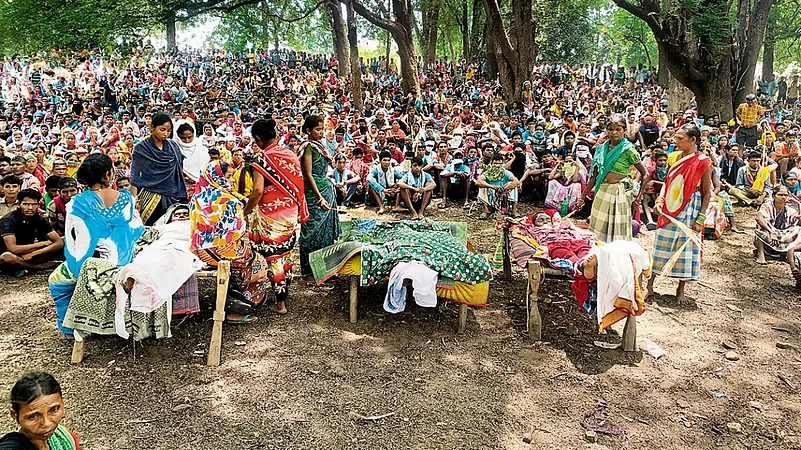On May 17 last year, three Adivasis died after the police opened fire on a gathering to protest the opening of a police camp in Silger village of Sukma district. Poonam Someli, a pregnant woman who was injured during the stampede following the firing, died a few days later. The deaths led to a movement that quickly stirred the forested zone of Bastar, an area bigger than Kerala. The protest that was limited to a few villages, soon took massive shape as Adivasis from distant villages marched to Silger. As the protests intensified, some young Adivasis formed the Mulwasi Bachao Manch and took their movement to other parts of Bastar.
The movement had two broad strands. One was to continue the protests in Silger, which saw the attendance of several thousand Adivasis on some occasions, and the second was to open new frontiers at other areas in the region. Bastar has seen several protests in the past, but they were mostly isolated and localised. Led by young Adivasis, the Manch soon received popular support and mobilised large gatherings at different places, such as Singaram (Sukma), Gompad (Sukma), Pusnar (Bijapur), Naodi (Dantewada) and Desa Ghati (Narayanpur).
“We have spread across Bastar, we have units at several blocks, we have committees at block and district levels,” Azad Musaki, a Manch leader, tells Outlook.
While Azad drafted occasional statements, Raghu Mudiyami led the front at Silger. Since the beginning of the Silger protests, the Congress state government tried to label them as Naxals. While agriculture minister Ravindra Chaubey said that the Naxals had infiltrated the ranks of Adivasi protestors, Congress spokesperson R.P. Singh said: “Naxals will not let those villagers who don’t join the protest do any farming for five years.”
These statements overlook the complex realities of Bastar. Large tracts of Bastar are dominated by the Naxals, as most Adivasis in the region follow a kind of an informal dual citizenship. Both the Naxals and the Adivasis inhabit the same wilderness, and the guerrillas draw their recruits from Adivasi households.
However, the Silger protests have been thoroughly peaceful and constitutional. The main demands of the Manch include the removal of police camps from Bastar, restoring mining rights to natives, fresh enquiry of various ‘fake encounters’ in Bastar and registration of cases against the guilty policemen. In just a year the Bastar Adivasi is more assertive about their identity than they ever were. The collective solidarity gave them a new voice and empowered them. There are now vocal demands for various constitutional rights, including the implementation of Schedule V. Expanding the ambit of their protest, they gather in Silger on various occasions like the anniversary of fake encounters and demand justice.
Unlike other civil rights movements, it has received little media or social media traction because its leaders live in a zone that has little electricity or phone signals. And yet, away from the public glare, Adivasis have kept the movement alive.
(This appeared in the print edition as "Bastar Speaks Up")
Liked the story? Do you or your friends have a similar story to share about 'ordinary' Indians making a difference to the community? Write to us. If your story is as compelling, we'll feature it online. Click here to submit.


























